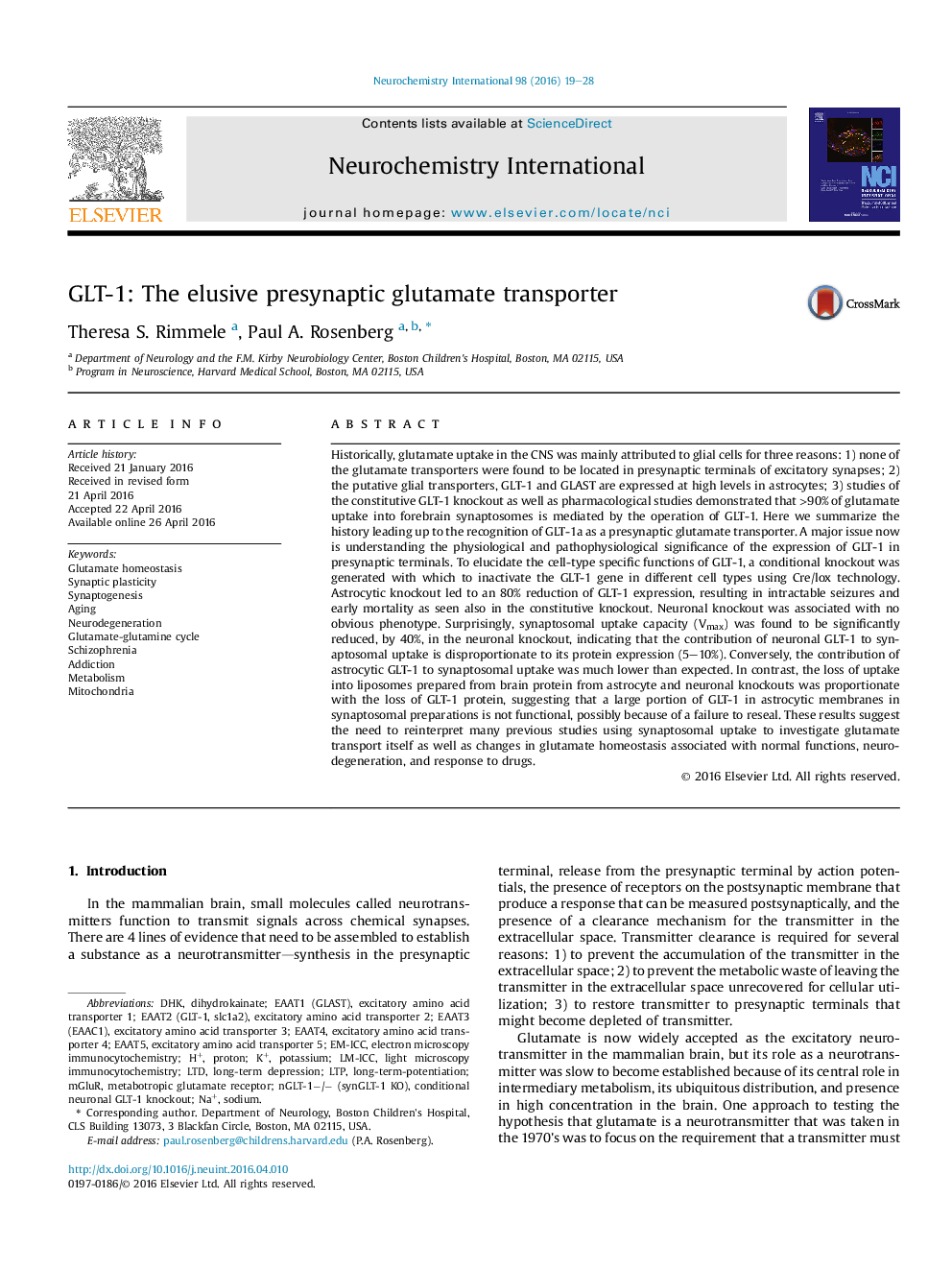| Article ID | Journal | Published Year | Pages | File Type |
|---|---|---|---|---|
| 2200247 | Neurochemistry International | 2016 | 10 Pages |
•Review of 40 year history of effort to characterize presynaptic glutamate transport.•GLT-1a is the glutamate transporter in excitatory terminals.•A conditional GLT-1 knockout confirms its presence and function in axon terminals.•Mismatch between neuronal and astrocytic GLT-1 uptake and protein expression.
Historically, glutamate uptake in the CNS was mainly attributed to glial cells for three reasons: 1) none of the glutamate transporters were found to be located in presynaptic terminals of excitatory synapses; 2) the putative glial transporters, GLT-1 and GLAST are expressed at high levels in astrocytes; 3) studies of the constitutive GLT-1 knockout as well as pharmacological studies demonstrated that >90% of glutamate uptake into forebrain synaptosomes is mediated by the operation of GLT-1. Here we summarize the history leading up to the recognition of GLT-1a as a presynaptic glutamate transporter. A major issue now is understanding the physiological and pathophysiological significance of the expression of GLT-1 in presynaptic terminals. To elucidate the cell-type specific functions of GLT-1, a conditional knockout was generated with which to inactivate the GLT-1 gene in different cell types using Cre/lox technology. Astrocytic knockout led to an 80% reduction of GLT-1 expression, resulting in intractable seizures and early mortality as seen also in the constitutive knockout. Neuronal knockout was associated with no obvious phenotype. Surprisingly, synaptosomal uptake capacity (Vmax) was found to be significantly reduced, by 40%, in the neuronal knockout, indicating that the contribution of neuronal GLT-1 to synaptosomal uptake is disproportionate to its protein expression (5–10%). Conversely, the contribution of astrocytic GLT-1 to synaptosomal uptake was much lower than expected. In contrast, the loss of uptake into liposomes prepared from brain protein from astrocyte and neuronal knockouts was proportionate with the loss of GLT-1 protein, suggesting that a large portion of GLT-1 in astrocytic membranes in synaptosomal preparations is not functional, possibly because of a failure to reseal. These results suggest the need to reinterpret many previous studies using synaptosomal uptake to investigate glutamate transport itself as well as changes in glutamate homeostasis associated with normal functions, neurodegeneration, and response to drugs.
